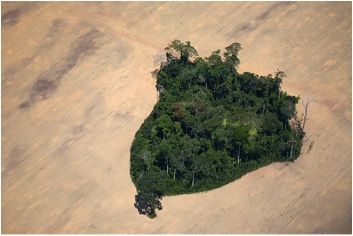This lesson explores potential impacts that humans have on biodiversity as well as defining biodiversity, and exploring the potential positive impacts it has on humans and ecosystems. The lesson includes an outdoor activity consisting of choosing and visiting three sites that span a gradient of human impact. Using data collected during this activity, students will learn to use these data to calculate indexes of biodiversity. Some time will be spent discussing benefits/drawbacks to the methods employed. Data from the three sites will be compared to explore how humans tend to affect biodiversity. The topic of genetic biodiversity will also be covered with some examples where genetic diversity is important for humans and ecosystems.
At the conclusion of the lesson, students will be able to:
- Assess levels of biodiversity in a given habitat
- Discuss benefits and drawbacks of different methods for measuring biodiversity
- Generate and test hypotheses about the levels of biodiversity in different ecosystems and regions
Resources:
- Lesson plan (.doc)
- Humans and Biodiversity presentation (.pdf)
- Discussion questions (.doc)
- Sampling exercise (.doc)
Lesson Plan created by GK-12 Fellows Kane Keller and Jay Sobel, 2008

